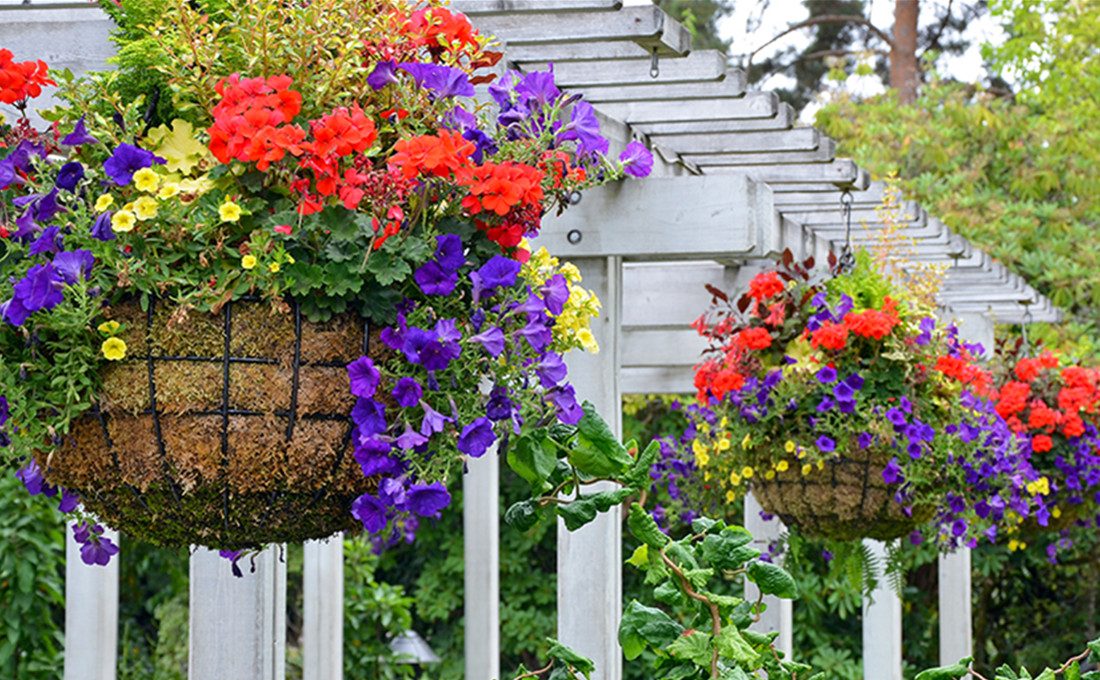#1: Hang the flower pot where it will get lots of sun. The more sun exposure, the faster your plants will grow. When hanging your plant pots outside (but making sure that the water can drain), you can place them near other plants to make use of their existing shade.
#2: Use a makeshift hook if you don’t have a pot hanger. Look for something that can support the weight of your hanging plant pots, such as a small branch from a nearby tree, and use it to hoist up the flower pot. If there are two trees next to each other that have branches of the right thickness, you can tie a rope around them at about waist-to-chest height. The rope should be as high as you want your hanging flower pot to hang from the ground.

#3: Use a chain and S hooks to create a chain link planter for your plants. Just be sure to use an industrial-strength S hook for this project because the weight of the plants will make it pull on your chain. Once you have everything set up, remember to water your plants regularly so they won’t wilt away.
#4: Use Twine or Rope . You can also tie twine or rope around branches to create a mobile planter for hanging flower pots. If you don’t want the planter to swing, wrap each piece of twine or rope with duct tape.
#5: Add an extra hook if your pot hanger is too short. To add extra hooks to your pot hanger, just slide in another length of chain onto the hook, and hang your plants on both.
#6: Hang it from a ceiling fan. Keep in mind that this will only work if you have an old-school or very basic fan with exposed beams. While most modern fans are designed to be flush against the ceiling, older models might have metal hooks for hanging planters instead of fancy light fixtures.
#7: If the support beam is wide enough, hang your hanging flower pot using S hooks on either side of the beam. Just make sure that you know how much weight it can hold before deciding to start this project.




